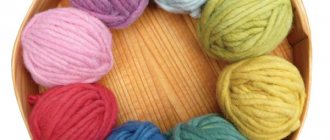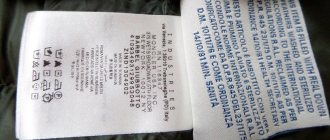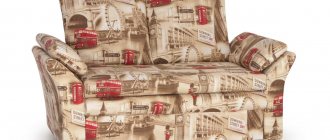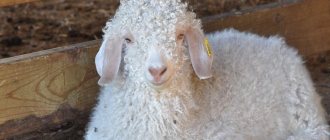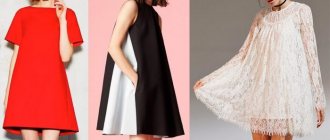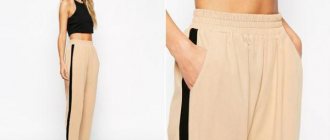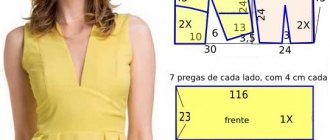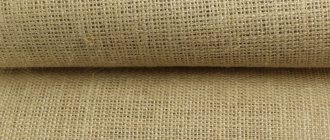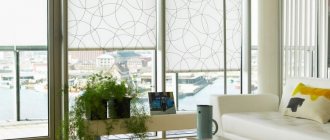Baroque style
The style appeared at the end of the 16th century and dominated the entire 17th century. This is the most luxurious, brightest, most magnificent, most theatrical and pompous style. This is a style of wealth that is not hidden and luxury that is not shy. More gold, more colors! Baroque is provocative, cumbersome, irregular. But despite its irregularity, it is symmetrical, patterned, convex.
Too much. Too much is the key word of the Baroque style.
Agnolo Bronzino. Eleanor of Toledo with her son 1545
Baroque - the first style that united the countries of Europe, made fashionistas and fashionistas from different countries a little similar to each other, since the same ideals prevailed. Europeans like the same clothing models, similar accessories and baroque colors: black, gold. Gold embroidery, voluminous lace, Spanish ruffled collars, which began their march across the fashion map of Europe at the end of the Renaissance and completely conquered all countries during the Baroque era.
Elizabeth of France, later Isabella of Bourbon, Queen of Spain (1602-44)
It is thanks to these corrugated collars that forks and napkins appear in table etiquette in the Baroque era. Lace collars were a luxury item, and not everyone could afford to wear them. That is why there is a need to treat them with care. Using a fork, you could eat without fear of staining your clothes.
And in principle, due to the size of the collar, it was almost impossible to eat without using cutlery. Just imagine, could you have a snack if you had such a collar?
Michael van Mierevelt. Portrait of a Woman 1635
And, of course, the Baroque style is characterized by all kinds of jewelry with pearls. Lots of pearls, pearls of different shapes, large pearls, varied use of pearls in different decorations - in sewing on dresses, belts, hats, shoes.
Isabella de Bourbon (Elizabeth of France), Queen of Spain (1602-44) - 1620
LECTURE 17. COSTUME OF THE BAROQUE ERA.
LECTURE 17. COSTUME OF THE BAROQUE ERA.
The Baroque style is ceremonial, majestic, decorative, which is characterized by pomp and many different trinkets and decorations. Men's suit. The fashion of the second half of the 17th century takes on a touch of childishness. A men's suit is characterized by the presence of parts: A white shirt with a slouch at the waist, puffy long sleeves and lace cuffs. Brasier - a short, open jacket with short sleeves from under which the cuffs of the shirt peeked out; small basque at the waist. Later, the short brassiere was replaced by a long justocore, an open caftan that reached almost to the knees. It hugged the figure, had a central side clasp with many buttons, and was richly decorated on the front. The sleeves are long, narrow with bells at the bottom, decorated with embroidery. The waist was belted with a wide scarf or bow. Welt pockets with flaps decorated with embroidery appear. Fluffy wide trousers with a tie at the knee and white silk stockings with lace garters. Over the trousers they wore wide rengrav trousers, also knee-length and with ties at the bottom. The outer garment was a long cloak draped over the left shoulder. Later, the justocore began to be used as outerwear. Shoes. They wore high boots made of soft leather with bells, decorated with a buckle on the instep and spurs. Nobles wore red heels with a large tongue on the front. Additions. An epaulette made of satin and brocade ribbon on the right shoulder, a sword belt, gloves, a watch and a cane with a large decorative patch. Hairstyles and hats. Fashion includes wigs made of long white curls, a beard in the form of a vertical stripe under the lower lip, and a thin mustache. Men wore conical hats with hard wide brims, decorated with ostrich feathers and ribbon. Later, cocked hats also decorated with feathers appear. Jewelry: a large number of jewelry in the form of rings, pendants, as well as embroidery on the suit with gold and silver thread, the finest lace.
Woman suit. The underdress becomes quite narrow with narrow sleeves, and a train appears at the skirt. Along the slit in the center of the bodice front, a row of bows appears along the entire length of the slit (ladder). There is a wide lace frill at the bottom of the sleeves. An outer dress with a long swinging skirt, with a train at the back, gathered in the front in the form of rollers, secured with buckles or bows. Outerwear consisted of a fur stole, a velvet or fur muff, capes with fur and long elbow-length gloves. Shoes. Shoes made of velvet or brocade with a narrow pointed toe and a high arched heel. Additions. A rain umbrella or a lace sun umbrella, a cane, a fan and lace handkerchiefs. Hairstyles and hats. The hair was combed in the middle, fluffed luxuriantly above the temples, and curls dropped over the shoulders. The “fountain” hairstyle was often used - curls laid on a high frame, decorated with frills, ribbons, bows and lace. Cosmetics. Both men and women used cosmetics: they whitened their faces, blushed their cheeks, inked their eyebrows and eyelashes. A special decoration were decorative black flies made of silk or velvet fabric, which were glued to the face, neck and chest. Decorations. An abundance of rings, beads, necklaces, pendants, earrings, brooches with natural pearls and precious stones. Homework. Prepare a presentation on the topic you have studied.
Baroque fashion
Of course, the fashion for lace became an opportunity for Dutch lacemakers to show off their skills. Flanders (Southern Netherlands) was famous for its special lace.
Lace was very popular; it made it possible to quickly refresh the appearance without changing the dress. Show how expensive and elegant the owner of any dark dress can look. And at the same time, fashionable, which is very important for the Baroque era. In this era, fashion is already everywhere - from royal palaces to city squares - most residents want to be fashionable and follow fashion.
Cornelis Ketel. Portrait of a woman (Holland)
The desire to conform to fashion pushed fashionistas to purchase lace at any cost. It happened that especially fashion-conscious ladies even ruined their husbands in pursuit of luxurious looks.
Of course, European royal courts set the tone for fashion. Everyone wanted to be like their crowned rulers, but, for obvious reasons, this was not allowed. But everyone tried to get at least a millimeter closer to their ideal image.
Marie de Medici 1610, Queen of France from 1600
People of the Baroque era rejected naturalness. The silhouette of a woman's suit is elaborate and complex. It was during the Baroque era that corsets and wide skirts appeared. Most baroque silhouettes have puffy, voluminous sleeves. And, of course, puffy collars.
William Segar. Portrait of an unknown lady, ca. 1595
And, of course, it is worth repeating the word “too” as an indicator of style. Baroque also implies too many items of clothing. Thus, in the beautiful self-portrait of Rubens with his wife Isabella, it is obvious to us that the head of the young beauty is clearly overloaded with wardrobe items. But this is so typical of the Baroque style. Look with what dignity the young wife poses and how pleased she is with her fashionable outfit.
P.P. Rubens. Self-portrait with Isabella Brandt 1609
Baroque colors are not always dark and gold. Light colors are also possible. The combination with the color red, the use of an extra large amount of pearls, a rigid corset, a fluffy skirt - all this makes us think of the Baroque style in clothing. Corsets made it possible to transform women's figures into ideal ones. The ideal for the Baroque era was very thin waists. For example, in France, under Catherine de Medici, at the end of the 16th century, court ladies were required to have a waist of no more than 33 cm!
Markus Geeraerts. Anne of Denmark, wife of James I, 1605-1610.
Other countries did not lag behind France, competing “within strict limits” at the royal courts, driving beauties into narrow corsets and unimaginably lush dresses.
Baroque in clothing then... (history of style with photos)
The history of the Baroque style in clothing is divided into then and now. First of all, European fashion of that time reflected the huge gap between strata, religious beliefs and nationalities. Catholic Spanish women continued to wear dresses with huge skirts and large collars around their necks (nicknamed the wheel of ruffs). Dresses were either very low-cut or very high-necked. They also had long sleeves ending in large cuffs with the same ruff wheels. Breeches became the norm for men in the first fifteen years of the 17th century. Look at the photo for examples of historical costume:
Already by the middle of the 17th century, dresses became less fluffy - they became soft and light to make it easier for ladies to move. The sleeves became more voluminous, sometimes they could even be oblique. Rigid ruff collars were replaced by lace and linen collars. If the dress had a neckline, then they wore thin strings of pearls. They also started wearing shoes with low heels.
Under Louis XIV, low-waisted dresses came into fashion, which completely changed the entire silhouette of a woman. The dresses became softer and lighter and began to be decorated with ribbons and stones. The sexuality of the time was expressed in open necklines and sleeves that were very wide and held on the forearm.
Baroque in modern fashion
But what about the modern world? Is the Baroque style popular now? We can say with confidence that yes, at least for haute-couture fashion it is in great demand. Let's take as an example a few photos from the latest fashion shows that took place in person last year before the pandemic began.
Dior. Spring summer 2020
Dior. Spring summer 2020
Look at the baroque patterning, the use of lace, and dark colors. And of course, the corset story with long and full skirts – isn’t this a modern interpretation of the Baroque style?
Fall-winter 2020-2021, ready-to-wear fashion week Milan. Gucci
Fall-winter 2020-2021, ready-to-wear fashion week Milan. Gucci
Fall-winter 2020-2021 ready-to-wear fashion week Paris. Alexander McQueen
Fall-winter 2020-2021 ready-to-wear fashion week Paris. Alexander McQueen
I hope that the Baroque style will be an inspiration for you when choosing an outfit for your New Year's party!
The material was prepared especially for Irkfashion.ru by art critic and Ecole school teacher Olga Strekalovskaya @olga_strekalovskaya
Characteristics
The Baroque style of clothing is distinguished by luxury, pomp and pretentiousness.
In general, the Baroque style is characterized by:
- lightness and feeling of harmony of one’s own movements;
- an abundance of external elements and effects;
- The pursuit of excellence;
- emotional elation;
- demonstration of luxury, wealth, pomp;
- theatricality, truly bordering on affectation.
The main requirement of Baroque is the ideal female figure - lush breasts, thin waist, voluminous hips.
Characteristic features of the Baroque style include:
- lace, which is constantly at the peak of popularity, as it gives the owners a special charm and elegance, and also creates a romantic, enchanting image;
- embroideries, from which entire works of art are created on any fabric using high-quality gold threads;
- long trains creating a royal charm, thanks to the dresses gracefully flowing along the floor;
- deep neckline, open shoulders, which emphasize seductive breasts, graceful neck;
- corsets with lacing, removing excess folds and also making the figure ideal;
- asymmetry, complexity - this trend moves from season to season, the secret of its creation is to combine clothes from different colors and textures.
